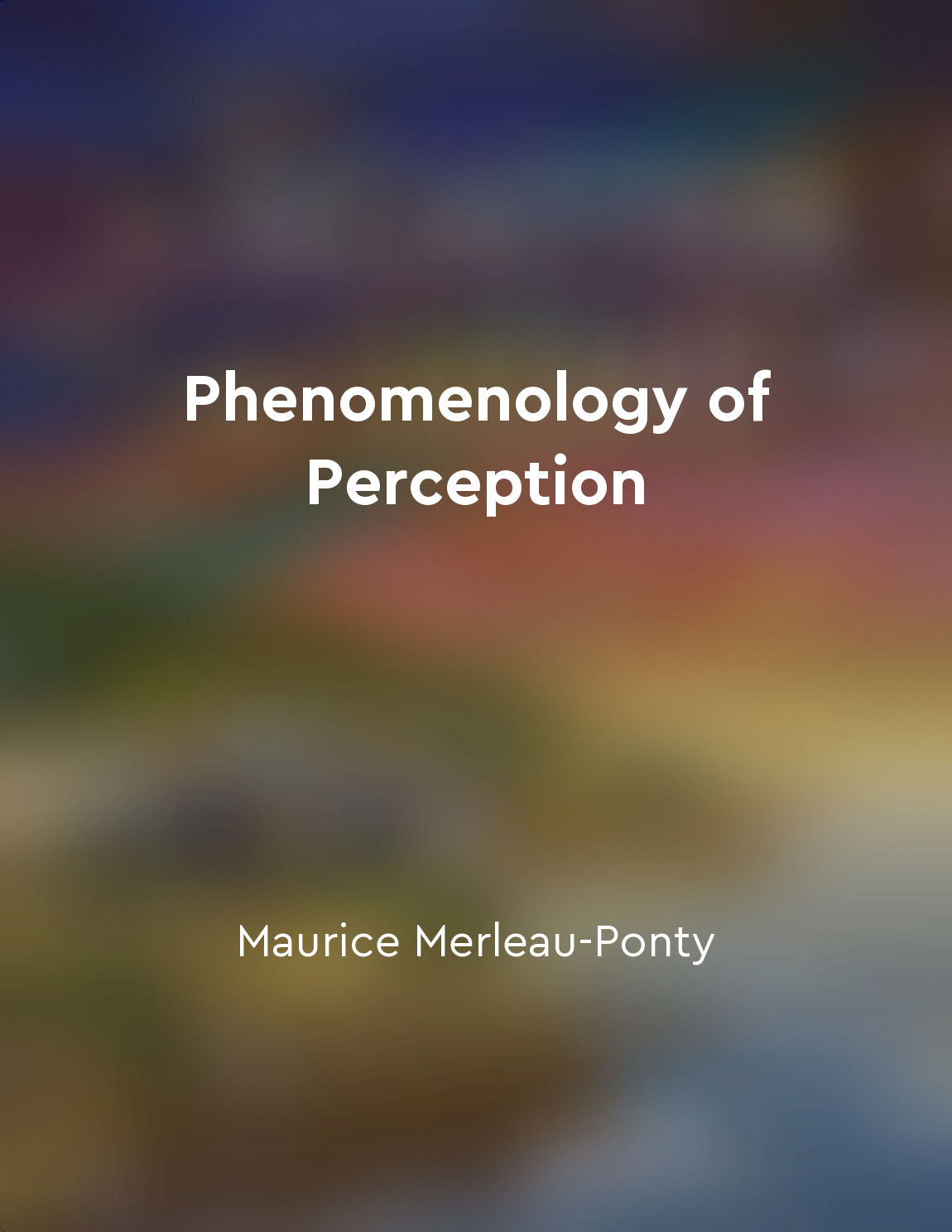Perception is not always accurate or reliable from "summary" of The Man who Mistook His Wife for a Hat by Oliver Sacks
Oliver Sacks vividly portrays in his collection of case studies the intriguing ways in which the human mind can distort reality. Through his patients' experiences, he demonstrates that what we perceive is not always a true reflection of the world around us. One such example is the case of Dr. P, who mistook his wife for a hat, highlighting the fragility of perception. Dr. P's condition, visual agnosia, caused him to struggle with recognizing objects and faces. Despite having perfect vision, his brain was unable to make sense of the visual information it received. This led to instances where he would mistake familiar objects for something entirely different, such as his wife's head for a hat. Sacks reveals how our perception can be easily deceived, even when we are convinced of its accuracy. The notion that perception is not always reliable is further emphasized through the case of Mr. MacGregor, who suffered from anosognosia. Despite being paralyzed on one side of his body, he adamantly denied his disability, claiming that his leg belonged to someone else. This disconnect between his perception and reality showcases the complexities of the human mind and how it can create alternate versions of the truth. Sacks delves into the intricacies of the brain and how its functioning can be altered, leading to distorted perceptions. Through his narratives, he challenges the reader to question the validity of their own perceptions and consider the limitations of their senses. He prompts us to reflect on the fallibility of our minds and the potential for misunderstandings in our interactions with the world. By exploring the various ways in which perception can be skewed, Sacks encourages us to approach our understanding of reality with a sense of humility and skepticism. He reminds us that what we see and interpret may not always align with objective truth, urging us to remain open to the possibility of error in our perceptions. In doing so, he invites us to reconsider our assumptions about the reliability of our senses and the accuracy of our perceptions.Similar Posts
Nash eventually learned to manage his symptoms
Nash's struggle with mental illness was a long and arduous journey, filled with ups and downs. At first, he was consumed by his...

Our bodily experiences shape our sense of self
Our sense of self is not something that exists in isolation from the world around us. Rather, it is intricately linked to our b...
Empathy is the key to understanding others
Empathy is crucial in our interactions with others. It allows us to truly understand their perspective, feelings, and experienc...
Implementing behavior changes requires consistent effort
Implementing behavior changes requires consistent effort. This concept is fundamental to the success of cognitive-behavioral th...
The brain can deceive the eyes in some cases
Oliver Sacks introduces us to the intriguing idea that the brain can sometimes play tricks on the eyes. He presents various cas...
The search for peace can be elusive
The search for peace can be elusive. It is a relentless pursuit, a constant journey with no clear destination in sight. As I de...
Cultivating empathy towards yourself can improve mind reading accuracy
To truly understand others, we must first understand ourselves. This may seem counterintuitive when it comes to mind reading, b...

The brain's ability to adapt can lead to both positive and negative outcomes
The brain's remarkable plasticity allows it to adapt to a wide range of circumstances, leading to both positive and negative co...
Technology aids in visual restoration
In the past few decades, there have been remarkable advances in technology that have revolutionized the way we approach visual ...

Brain plasticity can compensate for sensory deficits
Ramachandran demonstrates how the brain is capable of adapting to sensory deficits through a phenomenon known as brain plastici...

